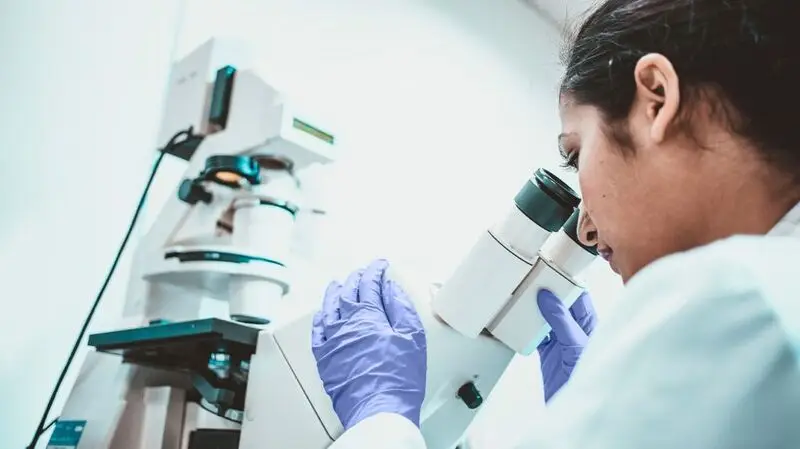
- Researchers say artificial intelligence has helped them identify two subtypes of prostate cancer.
- They say the new prostate cancer “evotypes” could be used to better diagnose patients and improve treatments.
- They add that the findings could be especially valuable in treating a disease where both under-treatment and over-treatment can occur.
Researchers are reporting that a program aided by artificial intelligence (AI) has helped them identify two distinct subtypes of prostate cancer — a finding they say could improve diagnosis and treatment of the disease, including preventing unnecessary surgery.
Their
In it, researchers from the University of Oxford and the University of Manchester in England identified the prostate “evotypes” using AI to analysis DNA data.
Researchers studied changes in prostate cancer samples from 159 people using genomic sequencing to identify the pair of evotypes.
The researchers say the findings could help develop a genetic test that, when combined with conventional staging and grading, could provide patients with a precise prognosis and treatment.
Rupal Mistry, PhD, a senior science engagement manager at Cancer Research UK, which helped fund the study, told Medical News Today that the research “laid the foundations for personalized treatments for people with prostate cancer, allowing more people to beat their disease.”
“Our research demonstrates that prostate tumors evolve along multiple pathways, leading to two distinct disease types,” said Dr. Dan Woodcock, a lead study researcher and a group leader in translational data science at the Nuffield Department of Surgical Sciences at the University of Oxford, in a press statement. “This understanding is pivotal as it allows us to classify tumors based on how the cancer evolves rather than solely on individual gene mutations or expression patterns.”
Dr. Michael Morris, the prostate cancer section head at the Memorial Sloane Kettering Cancer Center in New York who was not involved in the study, told Medical News Today that that the evotypes identified in the study could tell doctors and patients “which path they are on and how far down the path they have come” in their disease progression.
Doctors currently have a number of diagnostic tools for prostate cancer at their disposal, said Morris.
The prostate cancer
However, Morris said, these tests only provide a snapshot of where the disease is at the time of assessment, whereas the evotyping envisioned in the latest study “is a more dynamic mode.”
Morris noted that AI is also being used in other ways, such as evaluating pathology slides and imaging.
“This technology on multiple fronts is changing how we assess prostate cancer,” he said.
Still, under-diagnosis and over-diagnosis of the disease is far from uncommon, experts said.
“We simply don’t know enough about what a prostate cancer diagnosis means at present. There are many men who have disease which is or may become aggressive and being able to treat aggressive disease more effectively is critical,” said Naomi Elster, PhD, the director of research at the Prostate Cancer Research Institute who was not involved in the study.
“But on the other side of the coin are the too many men who live with side effects of cancer treatment they may never have needed,” Elster told Medical News Today. “These results could be the beginning of us being able to take the same ‘divide and conquer’ approach to prostate cancer that has worked in other diseases, such as breast cancer.”
Prostate cancer is among the
However, it’s also a unique form of cancer in that physicians may recommend no treatment at all in some circumstances, such as when the cancer appears to be slow growing or the person is elderly (and thus likely to die of natural or other causes before their prostate cancer becomes a health threat).
“Prostate cancer is a common disease process where many of the cancers diagnosed are not aggressive and treatment may cause complications and thus many of these less aggressive cancers are carefully monitored with active surveillance,” said Dr. Anurag Das, the chair of the urology department at Staten Island University Hospital in New York who was not involved in the study. “However, some of these less aggressive cancers over time may become more aggressive and there are also many intermediate risk cancers which could be followed or treated.”
”By combining this [diagnostic] method with more traditional methods using histochemical grading, it may be possible to better stratify the disease process and treat cancers that need to be treated while sparing treatment for patients whose disease is unlikely to progress,” Das told Medical News Today.
Dr. Christian Thomas, the director of clinical research at the New England Cancer Specialists in Maine who wasn’t involved in the study, told Medical News Today that while the findings are interesting, the study has several limitations, including a small sample size and people whose prostate cancer risk was characterized as low to intermediate.
“We really cannot draw any conclusions from this in terms of clinical management yet,” he said. “This is the kind of finding — there have been many research papers in the past doing very similar things — that would need to be confirmed in a larger clinical study, preferably a prospective trial that is randomized with meaningful clinical parameters as outcome measures.”





